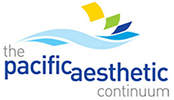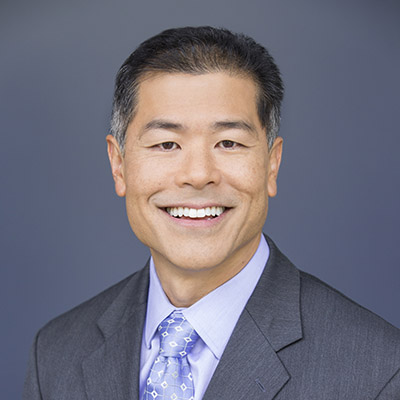
Dr. Michael Miyasaki
The word commodity means a basic good that is interchangeable because it is essentially uniform in quality across producers. Today we consider so many things a commodity that we shop for the best price. But art is not a commodity as the quality of art differs significantly between producers and dentistry is still an art, delivering a crafted product, and one we practice and try to improve on with every patient we treat. I had a team meeting this week and I reinforced that we need to build strong relationships with our patients and represent our services and care as being exceptional. I refuse to ‘compete’ in the commodity dental market. A filling is not just a filling, a crown is not just a crown, and, ultimately, you get what you pay for.
In this newsletter, I would like to focus on the importance of the laboratory and the relationship with the technicians because we should not consider laboratory work a commodity either, especially when the optimum aesthetic results are desired. When a clinician has been trained by the PAC and is working with Corr Dental Designs, the patient is treated by a clinician and a laboratory team that strives to achieve exceptional results. Here I would also like to acknowledge the launch of the Northern California Academy of Cosmetic Dentistry, a chartered affiliate of the American Academy of Cosmetic Dentistry, which is another great resource for learning and sharing.
Recently we had the privilege of working with a very nice patient who shared her dental cosmetic goals. Figure 1 shows the old restorative work that is discoloring and worn, tired looking teeth and the crowns on her left that had dark margins. She wanted a natural look, but a little brighter, a natural look, but a little longer, a natural look, but with a little bit more texture. And these days we could see some of her thoughts about what she preferred and did not prefer by looking at photos on her Pinterest (some things are different than the aesthetic cases we did 20 years ago).

Figure 1
She also said she would like to meet the technician who would be doing the case. My first thought was this is a case for Corr Dental Designs.
The laboratory came in and met the patient when we prepared the teeth. By meeting and talking with our patient they came to understand her aesthetic goals, but more importantly, they showed her how important she was to us and her appreciation grew. The ceramist even came to our delivery appointment to be sure our patient was happy and comfortable with the restorations.
What I want to show is the artistry. The laboratory did not create seven A1 restorations. They did not just fabricate restorations, but they created artistry. Our patient wanted distinct translucency and mamelons. She wanted natural cervical warmth with a higher value in the body area that would match her existing posterior crowns. In her case because of the wear, some old interproximal restorations and her reports of grinding, we elected to use full coverage restorations on teeth #s 6-12. Figures 2 and 3 show the temporaries. In the temporaries, we began to ask the patient what her preferences were, what she liked and what would she like to change and then this information was given to the laboratory with photographs.
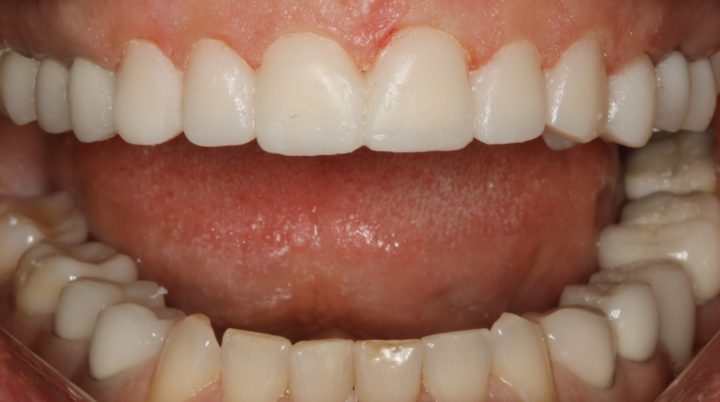
Figure 2
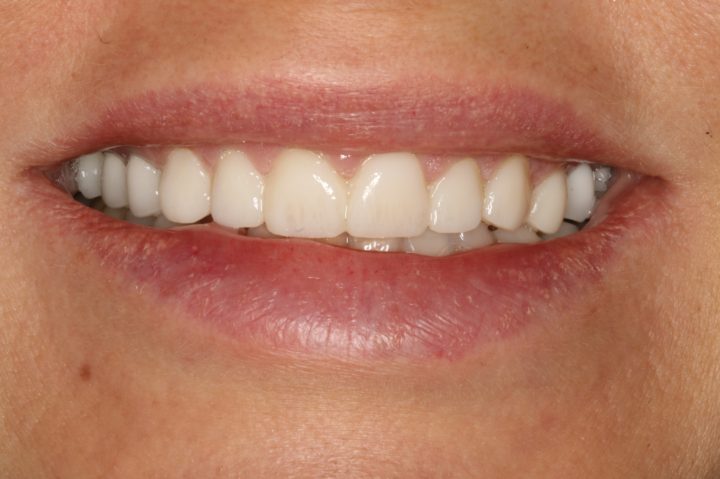
Figure 3
We shared the information with the laboratory as taught at the PAC courses with the color mapping, noting the preparation shade and desired lengths of the teeth. Corr Dental Designs took this information and created the restorations with distinct surface texture and incisal translucency as the patient had requested. But wait there is more. When we got the case back I measured the length of the final restorations to be sure they had been fabricated properly. I looked at the size and shape to be sure we had the correct smile design. Figures 4, 5 and 6 show how well the laboratory created the proper fit so that when all the restorations were placed on the solid model they sat completely. This attention to detail means the cementation appointment will go very fast making the visit more remarkable for our patient.
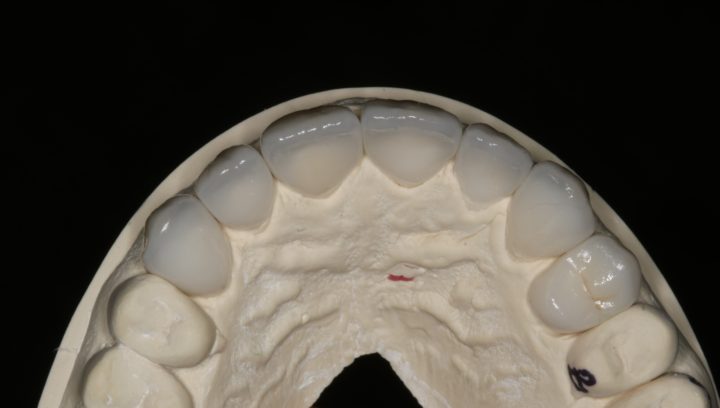
Figure 4
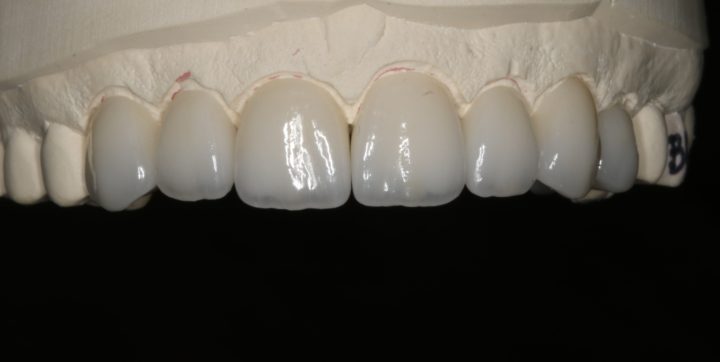
Figure 5
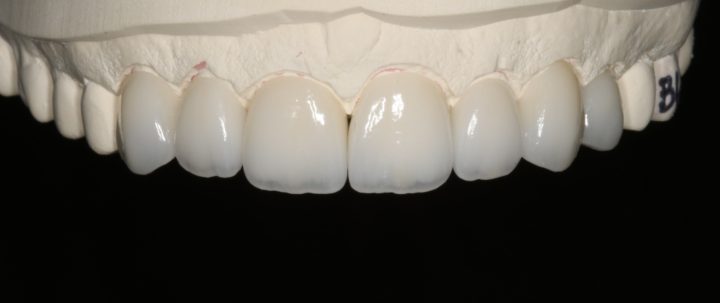
Figure 6
The end result was true artistry (figs. 7, 8 and 9). The restorations were beautiful. My team watched the restorations go in and they all wanted to ‘steal’ the restorations for their own smiles. My advice would be to not shortchange yourself or your patients. Enjoy your work, create art and deliver art you can be proud of (fig 10). To do this you have to use a quality laboratory so that together you create truly happy patients; there is nothing more fun or more rewarding. I look forward to seeing you at a PAC course soon.
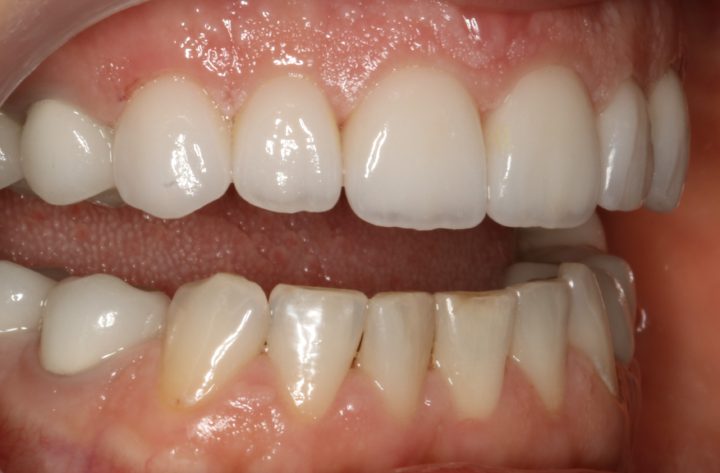
Figure 7
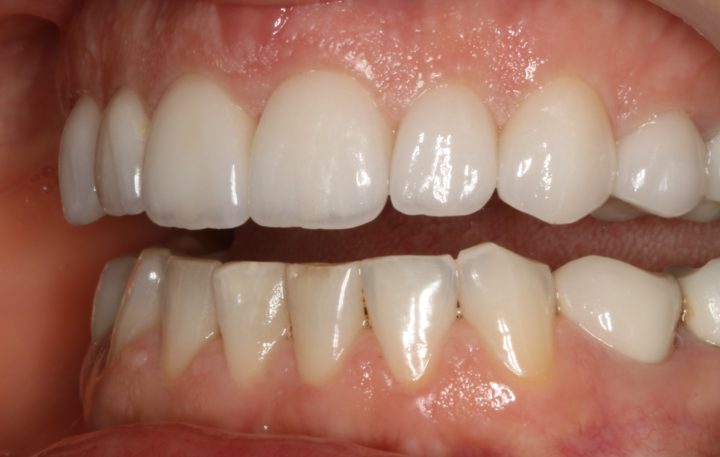
Figure 8
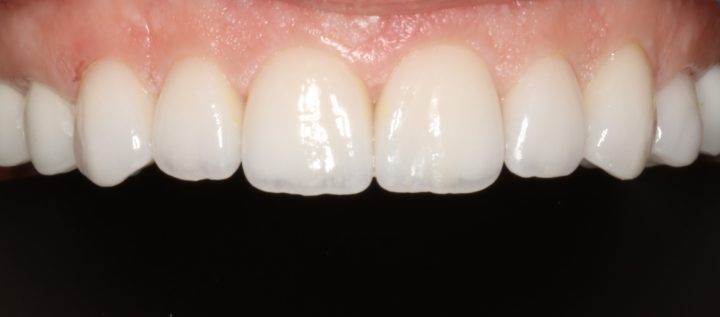
Figure 9
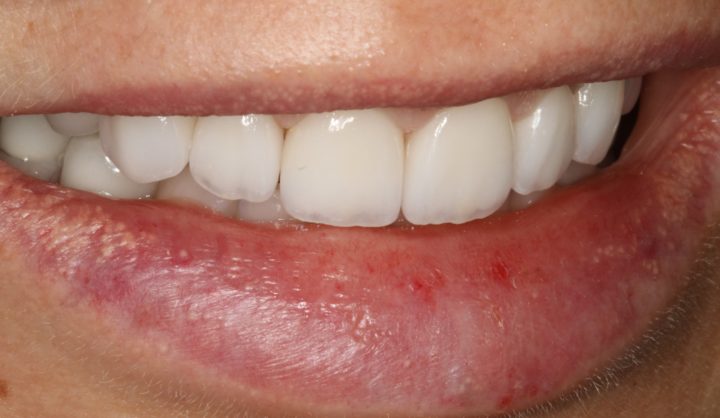
Figure 10
If you have questions about my article or if you would like to send a case, please contact the Pacific Aesthetic Laboratory Group at www.pacificaestheticdentalstudio.com, Gary Vaughn, CDT, CTO (916) 786-6740, or via email [email protected].
Figure 1. Pre-operative presentation
Figure 2 and 3. Temporaries at the preparation appointment and after a couple weeks to evaluate the shape and size.
Figure 4. All the restorations on the solid model to check the contacts, but one should also evaluate the facial embrasures, occlusal characterization, and lingual concavities
Figure 5 and 6. From the anterior view we want to check the length, contacts, incisal embrasures and incisal translucency and characterization.
Figures 7, 8 and 9 show the natural look of the restorations and the great tissue response from the biologic emergence profiles and well fitting margins.
Figures 10 shows from the character built into the restorations by a talented technician.
